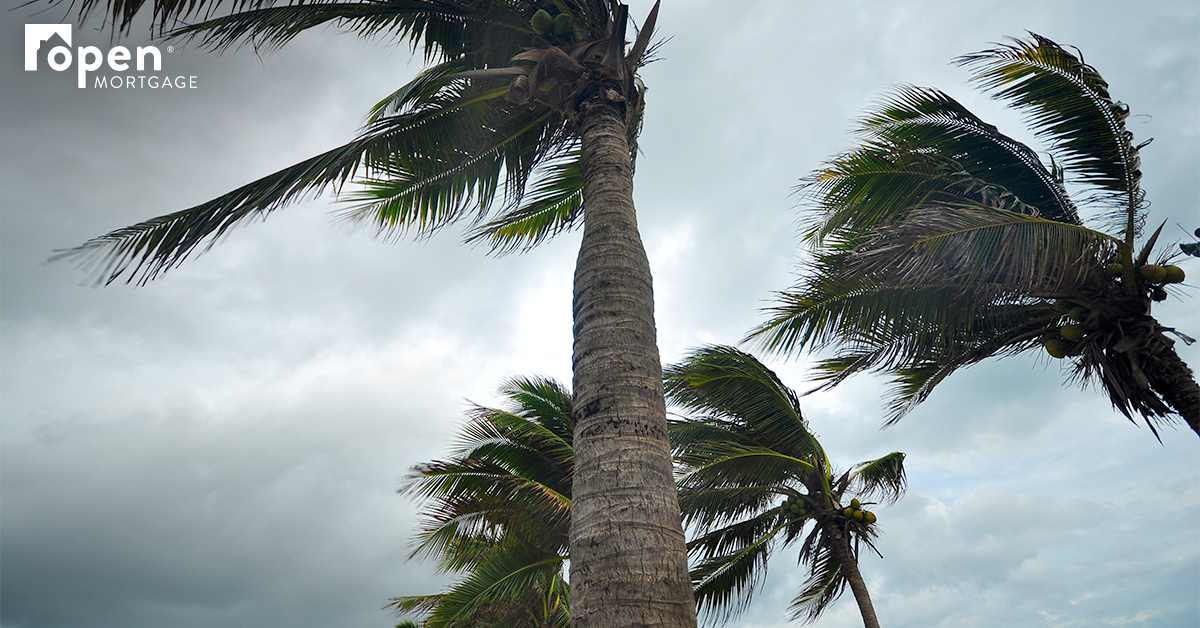
Managing Your Reverse Mortgage When Disaster Strikes
Natural disasters are nearly impossible to prepare for and can leave a wide swath of destruction in their path. From hurricanes and tornadoes to earthquakes and wildfires, unexpected disasters and extreme weather events can cause severe damage to your home.
For many with reverse mortgage loans, it can be difficult to navigate the unknowns in such a scenario. Luckily, maintaining homeowner’s insurance is a requirement for recipients of reverse mortgage loans and ensures that your home will be protected within the limits of the home insurance policy. Essentially, you’ll be compensated for the cost of rebuilding in the same way you would if you owned your home outright or had a traditional mortgage loan. This is because an insurance claim doesn’t impact the terms of your reverse mortgage, even if the home is completely destroyed, provided that you intend to keep it as your primary residence.
Things to Know
- Having adequate homeowner’s insurance is key to being able to rebuild/replace your home without significant financial burden.
- All FHA-insured reverse mortgages in a federally declared disaster area (formally called Presidentially-Declared Major Disaster Area or PDMDA) are subject to a 90-day extension of any foreclosure action.
- In order to keep your reverse mortgage from becoming due in this scenario, you must maintain the property as your primary residence and plan to rebuild/replace your home on the same property. You do not physically have to reside in your home during construction/repairs, however the property must remain your permanent address.
- Loss mitigation assistance, loan modification, pre-foreclosure sales programs and deed-in-lieu of foreclosure agreements may also be available depending on your situation.
What to Do
- File a claim with your homeowner’s insurance as soon as possible. Do not clean or salvage anything until an insurance adjuster evaluates your home. Catalog damages and take photos and videos to supplement your claim.
- Talk with your mortgage provider and communicate the situation. Ask about forbearance options if necessary.
- Use payments from your insurance provider (and your reverse mortgage, as needed) to cover the costs of rebuilding or repairing your home.
In the wake of a natural disaster, remember to use the resources available to you and follow the proper procedures. It may take time, but with the help of proper homeowner’s insurance and a thorough knowledge of the terms of your reverse mortgage, you will rebuild.
Things to know about Reverse Mortgages:
- At the conclusion of a reverse mortgage, the borrower must repay the loan and may have to sell the home or repay the loan from other proceeds
- Charges will be assessed with the loan, including an origination fee, closing costs, mortgage insurance premiums and servicing fees
- The loan balance grows over time and interest is charged on the outstanding balance
- The borrower remains responsible for property taxes, hazard insurance and home maintenance, and failure to pay these amounts may result in the loss of the home
- Interest on a reverse mortgage is not tax-deductible until the borrower makes partial or full re-payment






This is an Excellent & great post. I LOVE this article! It’s such a benefit for all visitors.
Hi there! I read a lot of posts but the topic covered in this is so Amazing & helpful. It’s such a benefit for visitors.
Your Blog is very Helpful and Professional. Thank you so much for sharing this informative post.
I read a lot of posts. But the topic you covered in this is the most comprehensive & helpful.
I’m here to appreciate you work This blog is very helpful for me. It’s such a benefit for visitors.
Your blog has been a source of inspiration and learning for me. Thank you for your valuable contributions.